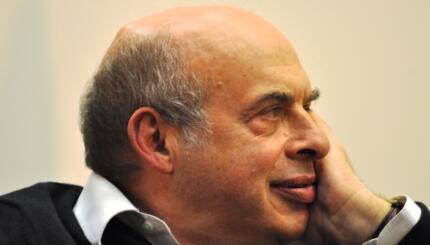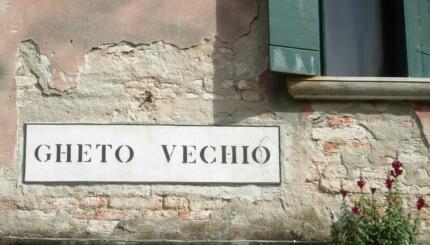In the past thirty years, gay, lesbian, bisexual, and transgender (GLBT) Jews have transformed the face of Judaism and Jewish communities in America. Following the feminist revolution of the 1960s and 1970s, GLBT Jews, sometimes referred to as queer Jews, have made significant changes in the way American Judaism and American Jewish communities address questions of family, identity, sexuality, and gender.
READ: Where the Jewish Community Stands on LGBTQ Issues
These same queer Jews are also at the forefront of the GLBT political movement that has remade the face of American culture, politics, and society. It is no accident that Jews are in the vanguard of such political activism, since queer Jews have a long history of working for queer rights. Magnus Hirschfeld, a German queer Jew, coined the term “transvestite” and inaugurated the first political movement for gay rights at the turn of the twentieth century. Another queer Jew, Mark Leno, pushed the San Francisco city council to pass a law requiring city health insurers to cover medical procedures particular to transgender people. Queer Jews are visible icons in American cinema, on the stage, and in literature; and a queer Jewish couple was the first same-sex pair to grace the pages of the New York Times’ Weddings/Celebrations page.
Queer Jews are also leading Jewish communities toward change, rather than waiting for those communities to act. Some communities are taking steps towards actively expanding their scope and programming to include this new constituency. In the San Francisco Bay Area, New York City, and other centers of progressive activism, queer Jewish issues are “hot” among mainstream Jewish organizations. In other metropolitan areas, queer Jews use mainstream organizations as incubators to develop their own institutions.
With your help, My Jewish Learning can provide endless opportunities for learning, connection and discovery.
One of the most visible changes in American Judaism in the past 15 years came when two of the country’s largest rabbinic organizations, the Reform movement’s Central Conference of American Rabbis and the Reconstructionist Rabbinic Council, gave their rabbis permission to perform same-sex Jewish weddings. The rabbinical seminaries for both of these institutions ordain gay rabbis. The Conservative movement still does not allow openly gay rabbinic students to be ordained, but seems to have adopted a de facto “don’t ask, don’t tell” policy. From all edges of Jewish society, queer Jews are pushing mainstream Jewish institutions to accommodate and adapt to the presence of queer Jews, and to do so with dignity and respect.
At the same time that queer Jews are demanding inclusion in the rituals and institutions of American Judaism and American culture, they are also forming their own institutions and cultures. The number of groups that have the words lesbian, gay, bisexual, and transgendered and “Jew” in the title is increasing exponentially.
Nationwide, there are dozens of synagogues, gay Jewish havurot (community groups), queer Jewish conferences, Internet groups, and other self-consciously created social spaces. One estimate puts the number of GLBT synagogues worldwide at 65. Moreover, there are now institutions that cater to a diverse queer Jewish community and reflect generational concerns, such as parenting classes and educational and camping programs for queer families. There are also groups for gay Jewish youth, aging queer Jews, same-sex interfaith couples, and GLBT Jews-by-choice.
Queer Jewish politics has also begun to include transgender people, who undermine the very notion of masculine and feminine, male and female. The issues and challenges transgender Jews face to make homes for themselves are only just beginning to emerge. Several Jews are at the forefront of transgender politics, theory, and culture. Leslie Feinberg, Jack Halberstam, and Kate Bornstein, all writers, activists, and performance artists, are just a few of the many transgender Jews who work tirelessly on behalf of the burgeoning transgender rights movement. At the beginning of the 21st century, we are witnessing an increasingly visible, flourishing, diverse, and assertive queer Jewish culture that is no longer defined simply by the external oppression of a homophobic and heterosexist society.
The ever more specific identifiers embraced by queer Jews suggest that as an organized group they are finding differences within themselves. One of the major shifts has been the emergence of a queer Jewish “post-Stonewall generation”–individuals who have come of age in a empowered, unapologetically queer culture, unlike their predecessors who fought for tolerance and recognition and struggled to establish institutions and lives of integrity with little community support and few role models. GLBT Jews are also having internal debates over the price of inclusion in established Jewish organizations. Queer Jews struggle with choosing between the desire to integrate into established Jewish communities, changing them from within, and the comforts of creating and maintaining “separate” spaces for queer Jews, what some have termed “assimilation” versus “separation.”
Such a polarized picture of queer Jewish politics, however, does not accurately portray the political and social changes queer Jews are making. Queer Jews’ calls for integration are often transformative rather than assimilationist. The transformative integration of Jewish institutions and communities is most visible within queer Jews’ personal institutions. Queer Jews are at the forefront of redefining conceptions of family, relationships, and community. For queer Jews, creating family involves both adopting dominant social norms—a couple with two kids and a picket fence—and moving beyond the mere assimilation of traditional definitions by undermining the assumption that family is determined solely via biology. Queer Jews have devised creative means for making families that involve reproduction, adoption, co-parenting, extended families, friends, and lovers. The construction of queer families means making conscious, deliberate choices all along the life course, and the activism of these groundbreaking Jews has forced all families, and Jewish institutions, to rethink the definition of family.
Queers have also irrevocably changed the meaning of marriage.Most queers marry, because they want to, because they want to express their love publicly to their communities, because they want to bring two lives into one. Queers do not marry for tax breaks or to make parents happy. Queer Jews have returned the idea of kavannah, of intentionality and desire, to the creation of Jewish families.
Although profound change is happening at the levels of community and family construction, and as much as positive representations of queer Jews have begun to pervade American culture, queer Jews still suffer from pain, stigma, fear, and alienation from families and Jewish communities. Simcha Sandi Dubowski’s film, Trembling Before G-d, documents the pain and ostracism that queer Orthodox people face in their daily lives from their closest community and from the religion that shapes their lives. But it is not just Orthodox queers who face difficult choices everyday. Queer Jews of all ages and in all Jewish movements, from budding rabbinic students to radical lesbians (and in a few cases, these describe the same people), continue to struggle with the closet, coming out, coping with fear, and enduring stigmatization.
Although many in the post-Stonewall generation have found ways to integrate their multiple identities, some queer Jews still struggle with the seemingly irreconcilable tension between being Jewish and queer. Despite the persistent struggle, queer Jews continue to form their own communities and simultaneously integrate into existing ones, and for the first time, the Jewish world is looking to these leaders to chart a path toward a reinvigoration of Jewish life in America. These leaders will create queer Jewish resource centers in all major communities, while ensuring that all Jewish institutions, from old age homes to teen-youth groups, open their doors to queer Jews.


